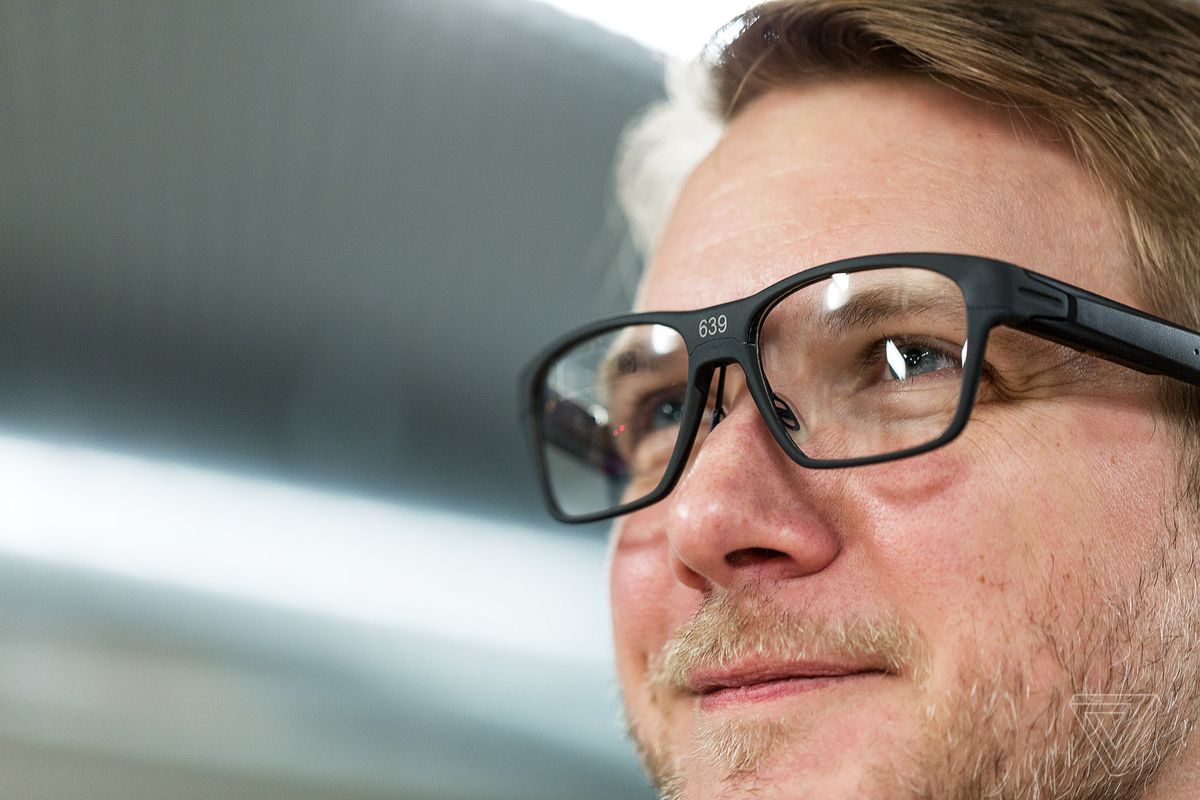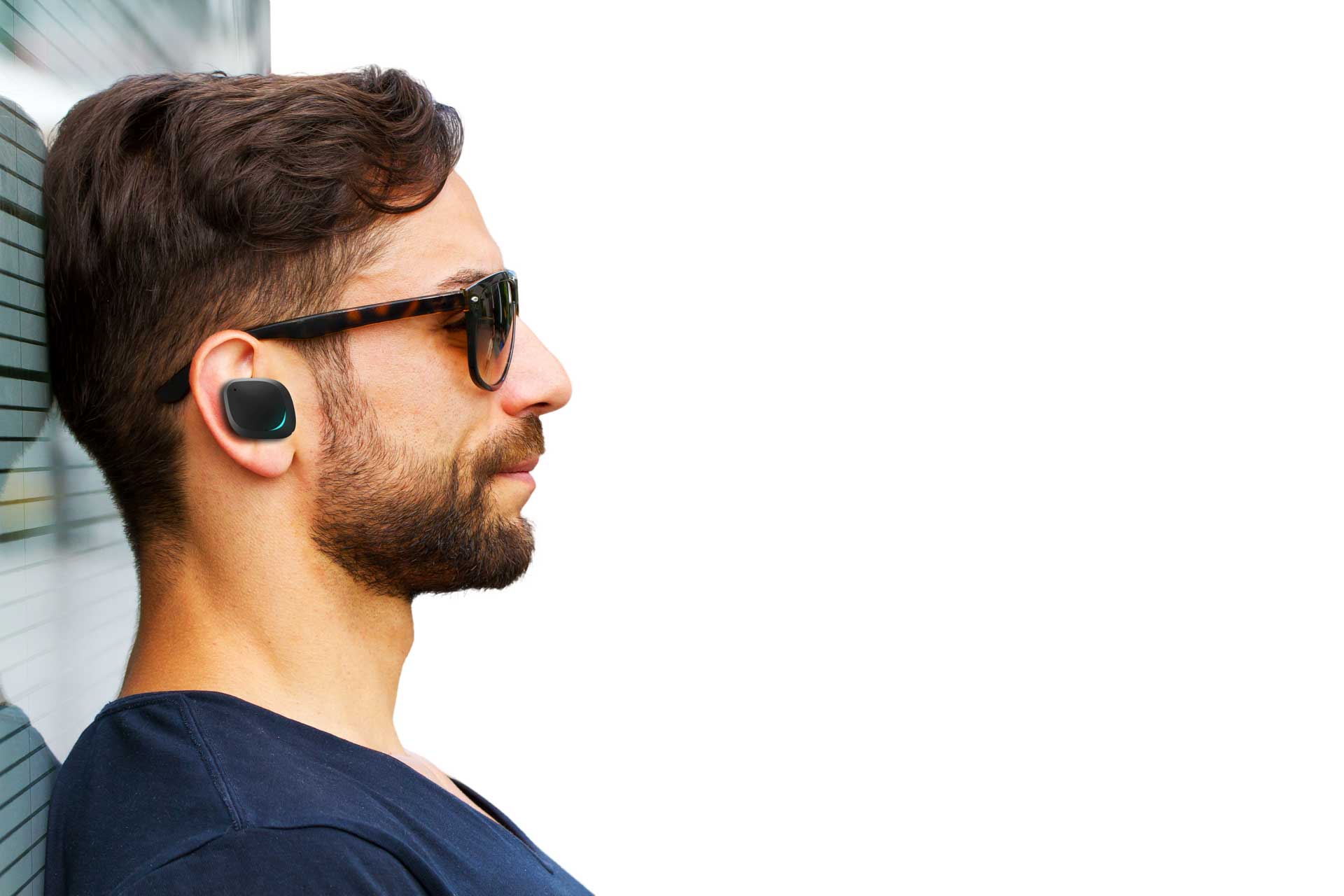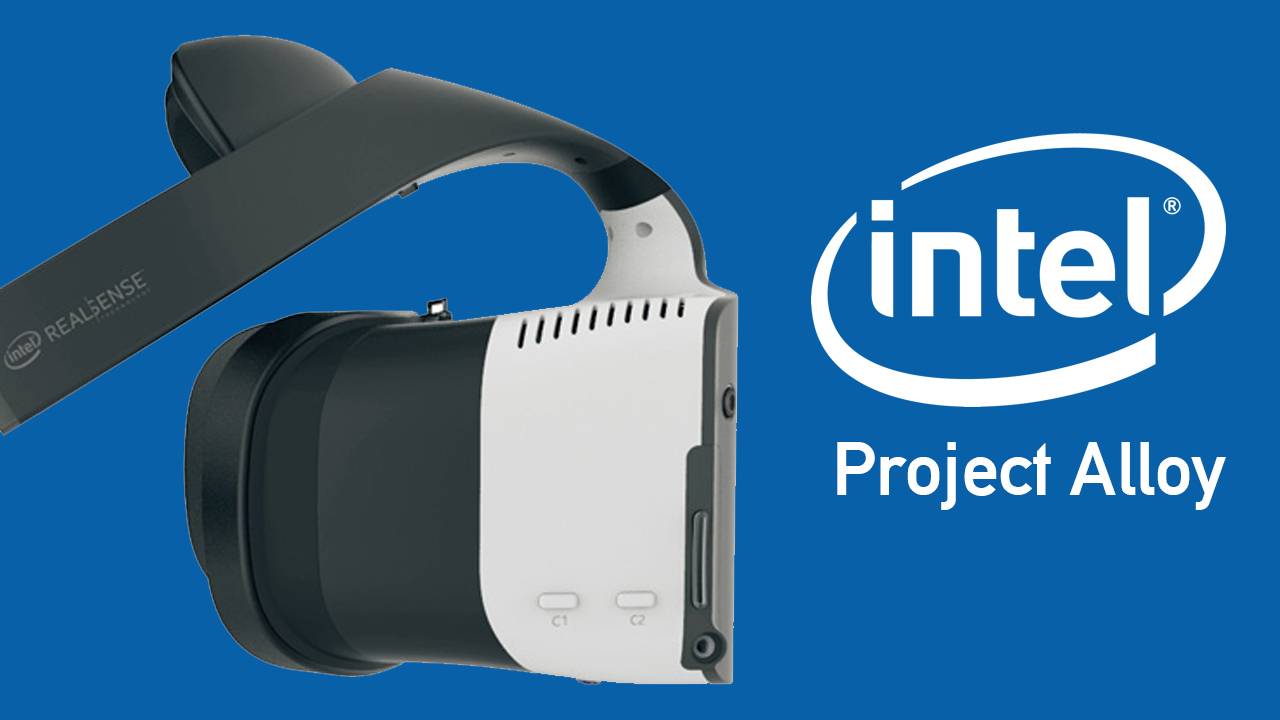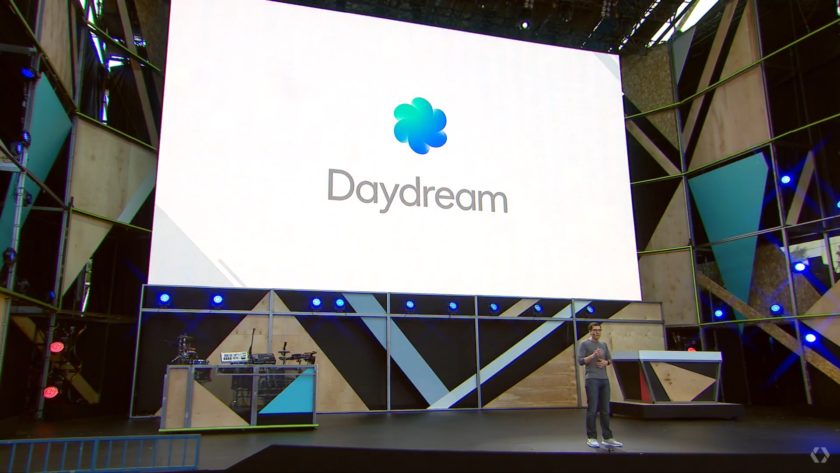
Posts Tagged ‘virtual reality’


Top 10 Most Important Wearable Trends in 2017
2016 was a good year for wearables. According to data from the International Data Corporation (IDC) Worldwide Quarterly Wearable Device Tracker, total shipment volumes reached 19.7 million units in 1Q16, an increase of 67.2% from the 11.8 million units shipped in 1Q15. Ramon Llamas, research manager for IDC’s Wearables team, said that “the wearables market continues to mature and expand.”Wearable devices still have a long way to go, but the technology has found its way into the hearts of consumers from around the world, who now eagerly await a new generation of products; one that will be sleeker, tighter, and more affordable than the current generation. These two meta-trends—maturation and expansion—will continue to play an important role even in 2017, as we’ll see when we go through our list of top 10 most important wearable trends in 2017.
10. Moving Beyond Smartwatches
For a long time, wearable devices were synonymous with smartwatches. Perhaps it was the influence of decades’ worth of sci-fi movies that caused the wrist to feel like the most sensible place where to put a small, sensor-equipped computer. Maybe it was our deep-rooted love for wristwatches combined with a desire to improve upon the timeless concept.What matters now is that engineers and designers of wearables realize that our bodies offer plenty more convenient places for wearable devices, such as our fingers and feet. Nimb is a ring with an integrated panic button that can send an alert to friends and family, community members, people nearby, or emergency services. It looks like a beautiful fashion accessory, rather than a state-of-the-art piece of wearable technology, and works in a very discreet manner.
The word discreet has played an equally important role in the design of Ringly, a line of bracelets and rings that connect to smartphones via Bluetooth, effortlessly keeping track of steps, distance, and calories burned—metrics that previously required a person to wear a bulky smartwatch.
Under Armour has shown other footwear manufacturers how to design a good smart shoe capable of tracking time, cadence, duration, distance, splits, and other things in the natural way possible. Others, such as Xiaomi, followed Under Armour’s lead soon after, and we expect to see this trend continue even in 2017.
9. New Metrics
Walking a few hundred extra steps every day is a good way how to lose a few pounds of fat, but it takes much more than that to achieve happiness and balance in life. The upcoming generation of wearable devices is aware of this, and it leverages some of the scientifically proven effects of mindfulness practice on the brain to affect the structure and neural patterns in the brain.One such device is called Feel. This smart bracelet recognized and tracks your emotions throughout the day and provides you with personalized coaching to help you achieve your emotional well-being goals. It does this by measuring responses from a variety of physiological signals sent by a person’s Autonomic Nervous System (ANS). Vinaya has similar goals, only with a greater emphasis on fashion and style, instead of science and data.
8. Project Soli
According to Google, “Project Soli is developing a new interaction sensor using radar technology. The sensor can track sub-millimeter motions at high speed and accuracy. It fits onto a chip, can be produced at scale and built into small devices and everyday objects.”Compared to cameras, radar technology has several key advantages. It has a very high positional accuracy, allowing developers to sense the tiniest motions with utmost precision. It can also work through materials, and, above all, the whole technology fits on a single chip with no moving parts, which could break. “It’s a tiny sliver you could balance on your pinky toenail, with four antennas that provide full duplex communication for sending and receiving radar pings,” commented Hakim Raja, Soli’s lead hardware and production engineer.
With Soli, developers can borrow a language based on the metaphors we are already familiar with from physical controls and use it as a way how to interact with virtual objects and user interfaces.
7. The Ability to Power Wearables Through Motion or Body Heat
The limitations imposed by our current battery technology are at the very top of what customers complain about when it comes to modern electronic devices. Most smartphones are happy to work for two consecutive days on a single charge, and smartwatches are nothing to write home about either.Fortunately, new ways how to generate electricity are just around the corner. “Researchers at North Carolina State University have developed a new design for harvesting body heat and converting it into electricity for use in wearable electronics,” states the university in a blog post. “Wearable thermoelectric generators (TEGs) generate electricity by making use of the temperature differential between your body and the ambient air,” the university further explains.
Chinese researchers have taken the concept of TEGs and turned it into a flexible, wearable thermocell capable of producing about 0.3 µW of power at 0.7V, which is enough power for a simple e-ink display, for example. Others, such as a lab at the Massachusetts Institute of Technology (MIT), create devices that can harvests mechanical energy from bending movements and convert it into electrical energy. As demonstrated during a fashion show in Bangkok, these technologies can be used together to develop smart fabrics that can harvest electricity from both the sunshine and the human body. Undoubtedly, they will play a central role in the design of many upcoming wearable devices.
6. Untethered Virtual Reality Experiences
Despite a substantial amount of skepticism, virtual reality headsets have become the coolest tech gift for Christmas 2016, proving to everyone that it’s here to stay and improve. One particular way how all VR experiences can instantly become more immersive is the attainment of what Jim Merrick, Qualcomm’s IoT director, calls “six degrees of freedom.” “We need to get to the couch, where people can consume content, where they already consume content, in the living room,” he argues against VR headsets that tether users to PCs. The ultimate goal is to allow users to move in a 3D space naturally. “If you step forward in the real world, you do [the same] in the virtual one.” Qualcomm’s solution is a reference headset called Qualcomm Snapdragon VR820, which relies on the incredible processing power of their Snapdragon 820 processor and a clarity of a pair of 1440 x 1440 resolution AMOLED panels that support up to 70Hz 4K video playback and a low latency of 18ms. Intel has also revealed their untethered VR and AR platform, Project Alloy. Alloy uses dual RealSense cameras to monitor location and position of objects around the user, promoting the concept of mixed reality. Other big names in the VR game are expected to demonstrate their upcoming untethered VR systems in the near future.5. A Spiritual Successor to Pebble
One of the hottest tech news stories of the Q4 of 2016 was the acquisition of Pebble by Fitbit, an American manufacturer of fitness products designed to help users stay motivated and improve their health by tracking activity, exercise, food, weight, and sleep. Pebble’s talent and their homegrown smartwatch platform could help Fitbit better compete with Android Wear devices and high-end smartwatches from Apple. Unlike the products carrying the logo of either Google or Apple, both Pebble and Fitbit share data freely with other third-party apps and take a utilitarian approach to aesthetics. The upcoming successor to Pebble smartwatches is likely going to focus on health and fitness tracking while staying faithful to the original design philosophy, which helped Pebble rack up over $10 million in Kickstarter backings, becoming one of the biggest projects to date.4. The Comeback of Smartglasses
In the world where the hype surrounding the initial release of Google Glass have fizzled out and morphed into skepticism about the entire concept, Snap Inc. have released an instant cult classic and single-handedly resurrected smartglasses from the ashes. Spectacles, a pair of funky video-recording sunglasses that take pictures and record video from the perspective of their wearer, removed everything that was nerdy and unappealing about Google Glass and replaced it with sheer, even if flawed, fun. After seeing the incredible success of Snap Inc’s Spectacles, other tech and sunglasses manufacturers, such as RaptorAR and Vuzix, have decided to join the party with sharply focused products. Apple is rumored to be working on a pair of smartglasses as well, so we have a lot we can look forward to in 2017.3. Project Jacquard
“Project Jacquard makes it possible to weave touch and gesture interactivity into any textile using standard, industrial looms. Everyday objects such as clothes and furniture can be transformed into interactive surfaces,” states the team behind this amazing technology on the official website. In collaboration with their industrial partners, the creators of Project Jacquard have developed new conductive yarns that combine thin, metallic alloys with natural and synthetic yarns like cotton, polyester, or silk. These yarns are supposed to be indistinguishable from the traditional yarns that are used to produce fabrics today. When woven throughout the textile or at precise locations, Jacquard would provide manufacturers of wearable devices with a very discreet way how to capture touch and gesture data and wirelessly transmit them to mobile phones or other devices. One of the first articles of clothing that uses the technology is The Levi’s Commuter Trucker Jacket. “Jacquard allows wearers to control their mobile experience and connect to a variety of services, such as music or maps, directly from the jacket. This is especially useful when it might be difficult to use the smartphone, like when you are riding on your bike.”2. Daydream VR
Mobile VR is seen by many as the perfect way how to experience the wonders of virtual reality, but the current technology is severely limited. On the one hand, there is Samsung Gear VR, which works only with a small number of flagship smartphones from the South Korean manufacturer. On the other hand, there is a large sea of Cardboard-compatible headsets that work with just about any Android smartphone but are limited in terms of graphical fidelity and the sense of presence they provide. Google wants to bridge this gap with Daydream, a virtual reality platform developed by Google for Android Nougat consisting of Daydream-compatible headsets, Daydream-ready smartphones, a wireless controller, and a special VR software mode that lets users use virtual reality apps, such as YouTube, Google Maps Street View, Google Play Movies & TV, and Google Photos in an immersive view. The first phone by Google, Pixel, is also the first Daydream-ready smartphone. Just like all upcoming Daydream-ready smartphones, Pixel has a crisp, low-persistence screen, ample processing power, and runs on the latest version of Google’s mobile operating system. Many manufacturers, including Samsung, LG, HTC, Asus, Xiaomi, ZTE, and Huawei, have already stated they will be making Daydream-ready phones, headsets,t and controllers. In 2017, a compatibility with Google Daydream could be a major deciding factor when buying a new smartphone; even mid-range devices are now powerful enough to satisfy most users, so extra features such as smooth, high-fidelity virtual reality, will likely play a vital role.1. The Rise of Hearables
We have yet to witness the first big hearable release, but the steady rise of this niche type of werable devices represents the noticeable shift toward persistent ambient computing. The same shift is represented by AI-enabled assistants like Siri, Alexa, Cortana, or the Google Assistant. Persistent ambient computing is possible, to a great extent, thanks to the recent advancements in artificial intelligence and speech recognition. The main idea behind hearables is to shrink the technology inside Amazon Echo or Google Home and fit it inside a small in-ear headphone. Some of the first hearables on the market will focus on music control and phone calls, but others have higher aspirations. For example, The Pilot is an earpiece which translates between languages “using the latest technologies in speech recognition, machine translation, and the advances of wearable technology,” as explained on the project’s Indiegogo page. The possibilities of what could be achieved in another few years with this technology are mind-bending. The rise of hearables could lead to the same fundamental shift in communication, our access to information, and our ability to cross borders and cultures as the internet did.
Intel Project Alloy: Is There a New Sheriff in Town?
Intel CEO Brian Krzanich unveiled Project Alloy, a new virtual reality platform, during his opening keynote at the 2016 Intel Developer Forum in San Francisco. “The Alloy platform completely redefines what is possible in an all-in-one VR platform,” states Intel in their press release, referring to Alloy’s mixed use of augmented and virtual reality.To those who closely follow the virtual reality industry, Intel’s entry into the crowded mosh pit that is VR likely comes as no surprise. The company has missed their chance when it comes to mobile, so the pressure is on them to come up with a technology that would help them stay as relevant in the future mobile-first world filled with virtual and augmented reality experiences as they are now.
Google has been pushing virtual reality with their ultra-affordable headset made from cardboard, and, with Google Daydream, the company is now starting to establish itself in the as a worthy competitor to Samsung’s Gear VR, a mid-range mobile virtual reality headset. But neither of these companies occupies the spot that Intel wants to seize. The main target is the same demographic that would purchase an Oculus Rift headset for its superior graphical fidelity and immersion.
“Merged reality delivers virtual world experiences more dynamically and naturally than ever before and makes experiences impossible in the real world now possible,” said Intel’s chief executive, Brian Krzanich. Project Alloy revolves around Intel’s RealSense technologies, a platform for implementing gesture-based human-computer interaction techniques.
When used for the purposes of virtual reality, RealSense technologies help Intel get rid of several critical restrictions of current VR solutions. For starters, Project Alloy cuts all cords, allowing users to enjoy a free range of motion without being chained to a computer. To ensure users won’t bump into real objects while being immersed in virtual worlds, Alloy employs advanced collision detection and avoidance system. As a user approaches, let’s say, a wall, the wall will become visible in the virtual world.
Not only that but the same technology also allows you to bring your own hands into your virtual world and use them to interact with objects just like you would in real life. The RealSense cameras on the headset can accurately track finger movements, analyze them in real time, and project them back into the virtual environment with an unnoticeable delay of just a few milliseconds. What’s possible with a technology like this is limited only by the imagination of developers.
Intel knows that and is ready to support developers by releasing a suite of sensing and computing technologies and collaborating with Microsoft to ensure that Windows-based content works great on Alloy and other Intel-based virtual reality devices. According to Intel’s website, “Intel will open the Alloy hardware and provide open APIs for the ecosystem, allowing developers and partners to create their own branded products from the Alloy design, in 2017.”
The current version of Project Alloy, which is still just an early prototype, shares certain design features of both PlayStation VR and Samsung’s Gear VR. One commentator complained about problems with fit and comfort, saying that the headset felt too heavy. But, according to Tim Parker from Intel, the final version of Project Alloy will offer a much better user experience. The company plans to ship first units in the second half of 2017, and they should feature Kaby Lake processors and a single 400 series RealSense camera, instead of an older Skylake processor and two R200 RealSense cameras. What’s more, the final Project Alloy will support a discrete graphics card.
In past, Intel debuted several interesting tech concepts which failed to turn into real products, but, hopefully, things will be different this time around. Their partnership with Microsoft is promising and so is the concept itself. We already have lightweight mobile VR systems that offer a blurry glimpse of what VR is all about, and there’s no doubt that there will be no shortage of heavy-duty tethered systems. Project Alloy could be right in the middle, striking the perfect balance between portability and graphical fidelity.
Of course, a device that’s essentially a PC with an Intel microprocessor in it is just what the company needs to establish a foothold in the virtual reality market and ensure their revenue stream won’t dry up as our computing habits evolve and change.

Daydream: Google’s Push into VR
Two years have passed since Google’s humble entry into the virtual reality market with Cardboard, and time has come for the company to take their efforts a step further. Their vision for a VR ecosystem powered by capable mobile devices has a prophetic name: Daydream.The idea behind the project isn’t to throw away Cardboard into the pits of technological obsolescence, but rather to offer customers the next logical destination on their journey towards an immersive VR experience. Clay Bavor, Google’s vice president of virtual reality, commented, “We knew that Cardboard would only go so far, because there’s only so much you can do in terms of immersiveness and interactivity with—let’s be serious—a piece of cardboard, and a phone that was really only meant to be a phone.”
Google is going to keep Cardboard around as a highly affordable way how VR newbies can get a glimpse of what the once futuristic technology is all about. When the same customers reach the limits of what’s possible with Cardboard, they will know exactly what to buy next: Daydream.
So, what is Daydream? According to Bavor, Daydream is about enabling very high-quality mobile VR. The key word here is “high-quality”. Google is well aware that any truly immersive mobile VR experience will require a suitable hardware to run on. Not only that, but the entire ecosystem – apps, operating system, VR glasses – has to work in unison.
That’s why Google is working with their industry partners and in-house developers to create a VR platform the world has not seen before. The first Daydream-compatible smartphones – the ZTE Axon 7 and Asus Zenfone 3 Deluxe – are right around the corner, and so are the other two pillars of Daydream.
Three Pillars of Daydream
During his presentation at Google IO 2016, Bavor explained the steps Google took to create “our platform for virtual reality.” To succeed, Google needs to have a total control over the VR experience. Customers must know that when they purchase a Daydream-certified smartphone, they won’t run into any compatibility or performance issues.There’s simply no more room for guesswork like there was (and still is and will be) with Cardboard. Samsung, with their Gear VR, has shown that customers are willing to pay extra for a smartphone that does something extra. But Samsung’s problem is the inability to control the experience from top to bottom. Users have to fight an operating system not meant for virtual reality and apps developed with only a vague idea of the kind of VR headset the apps are going to be consumed through. But all that is about to change.
Smartphones
Google doesn’t want any redundancy in their platform. The company expects smartphone manufacturers to bake all the functionality and features necessary for a smooth VR experience directly into their devices.This entails powerful hardware capable of pushing demanding graphics at 60 frames-per-second, low-persistence displays with little to no lag to eliminate ghosting, and high-quality, latency-free sensors to increase the sense of immersion when inside a virtual reality world.
Prominent smartphone manufacturers, including Samsung, HTC, LG, Xiaomi, Huawei, ZTE, Asus, and Alcatel should have daydream-ready smartphones available this fall. The beauty of this approach lies in the fact that the whole platform can evolve in a similar way as video game consoles do. All that Google has to do to take Daydream to the next level is to bump up the reference specifications and call the result “Daydream 2.0” or something similar. With enough time, Daydream could start competing with PC-tethered headsets.
Headset and Controller
The current mobile VR experience is held back by the chaos that reigns among the headsets. The market is flooded with headsets ranging from a few dollars to few hundred dollars. Some are compatible with devices up to 6”, others can fit only smaller smartphones; certain models have a wide field of view and high-quality optics, but there’s a slew of other headsets that don’t even come close.With Daydream, Google has taken their experience and created a reference design that others can use as a blueprint to come up with something of an equal quality. The sketch they showed at Google IO 2016 depicted a sleek, clean headset that should appeal to regular smartphone owners and tech enthusiasts alike.
To complement the headset, Google has also created a VR-optimized controller that’s both powerful and intuitive. Its DNA can be traced back to the Wii Nunchuk Controller, as a consequence of its minimalistic appearance and built-in orientation sensor that allows for intuitive motion control. A circular clickable touch pad is designed to bring touchscreen gestures to the virtual world, and two buttons – a home button and app button – provide all the essential functionality without overwhelming users with options.
Apps
The team behind Daydream has been working with the core Android team to include VR capabilities in the next version of the mobile operating system. Starting with Android N, users will be able to put their smartphones into a special VR mode, which will change the UI, making the device easily controllable even while still in VR. Substantial changes have also been made under the hood to allow for a very low latency of less than 20ms and increased performance.Clay Bavor said that Google will take a strong stance on quality and not allow badly written, designed, or optimized apps to enter into the Daydream ecosystem. “We want to make sure that we’re representing good VR to our users.”
Google wants to lead by example with their apps. The Play Store, YouTube, and Street View are all going to be optimized at launch to deliver an uncompromising user experience. A new face among Google’s increasingly larger collections of apps is the Daydream Hub, a kind of home screen that acts as a gateway to all games and virtual reality apps.
More VR apps are expected to pop up in the near future, thanks to Google’s partnerships with the New York Time, WSJ, USA Today, Netflix, Hulu, IMAX, NBA, MLB, and many others. New VR games from EA, Ubisoft, NetEase, and OtherSide Entertainment are also on the horizon, so there’s no reason to doubt that there won’t be enough compelling content available when Daydream takes off.
It’s Coming
The release of Daydream is planned on Autumn 2016, shortly after Android Nougat is out. Given that Cardboard headsets hover around $10 and Gear VR currently goes for $100, Daydream will probably be positioned right above the Gear VR, in terms of its price.Google’s vision of the future seems to involve ultra-powerful smartphones that act as keys to countless invisible virtual worlds around us. They recognize that once we reach the point where we no longer need to own a laptop or PC just to get more processing power, smartphones and mobile operating systems will become the only thing that matters.